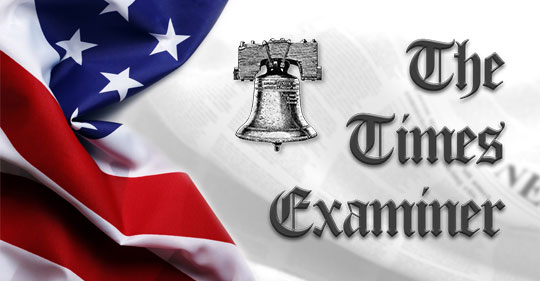Significant Facts, Myths, and Mistakes

The French pulled out of Indochina in 1954, shortly after the Battle of Dien Phu on May 7, 1954. However, losing 4,000 dead and missing, and the surrender of nearly 12,000 French Foreign Legion and French Union troops (including 6,600 wounded) at Dien Bien Phu was not the principal reason France gave up the colony it had governed since 1887. The French-Indochina War was a Two-Front War. The war was really lost on the home-front after 9 years of intensive Communist agitation and propaganda. The French Parliament, having only a small plurality of moderates and conservatives over socialist and leftist parties, finally caved.
Four U.S. presidents had significant influence on Vietnam War strategy—Kennedy, Lyndon Johnson, Nixon, and Ford. Eisenhower gave some financial and air-supply efforts to extricate the French from their impossible position at Dien Bien Phu and provided leadership in creating the eight-nation SEATO agreement to protect South Vietnam, Laos, and Cambodia from further Communist aggression in 1955. Eisenhower had placed 900 U.S. military advisors in South Vietnam before Kennedy took office in January 1961.
Kennedy made two major early mistakes. First, he allowed North Vietnam to violate Laotian neutrality and begin building the Ho Chi Minh Trail, a huge network for moving equipment, supplies, and troops through Laos and Cambodia into South Vietnam. Second, concerned about Buddhist demonstrations beginning in May 1963 against South Vietnamese President Ngo Dien Diem, Kennedy was influenced by liberal U.S. media to back a regime change to overthrow Diem. This was although Diem was making economic, security, and political progress in fighting North Vietnamese directed terrorists. These Buddhist demonstrations were actually orchestrated from North Vietnam.
The coup by ambitious dissident South Vietnamese generals resulted in Diem’s assassination on November 1. Kennedy was himself assassinated three weeks later on November 22, 1963, in Dallas. There were 25,000 U.S. troops in South Vietnam at that time.
The coup and assassination of Diem caused two years of chaos in South Vietnamese government and the South Vietnamese Army. North Vietnam responded to this unbelievable opportunity by infiltrating 240,000 troops into South Vietnam from 1964 to 1967 and expanding Viet Cong (VC) auxiliaries from 30,000 to 80,000. To counter the combination of South Vietnamese chaos and massive North Vietnamese invasion, President Johnson brought the level of U.S. troops to 150,000 by November 1965.
Beginning in 1965, the U.S. Joint Chiefs of Staff (JCS)recommended strategic bombing of North Vietnam and mining of North Vietnamese ports to defeat North Vietnam quickly. But Lyndon Johnson and Defense Secretary McNamara refused to allow strategic bombing and mining. The JCS had six major conflicts with McNamara over Johnson’s gradualist strategy. The Chief of Naval Operations in the Pacific and overall commander of all U.S. forces in the Pacific, Admiral U.S. Grant Sharp, called this “powder-puff air warfare,” and later declared it was the most asinine way conceivable to fight a war. Read: Strategy for Defeat—Vietnam in Retrospect, Admiral U.S.G. Sharp, USN (Ret.), 1978.
The most appalling of all was Johnson’s Operation Rolling Thunder, the epitome of gradualism, in which enemy bombing targets were deliberately limited and only gradually expanded, while we allowed the North Vietnamese to build up the greatest concentration of anti-aircraft capability in history. The U.S. Air Force and Navy lost 922 aircraft over North Vietnam and a total of over 2,000 in all Vietnam and Laos. We sacrificed 398 of the 833 F105’s ever built, playing “powder-puff air warfare.” My own squadron of A-26s lost 12 of 30 deployed aircraft (40%) between 1966 and 1969, mostly over Laos. Johnson allowed 16 bombing halts to encourage negotiation. The North Vietnamese took advantage of all of them, using the opportunity to build up their forces and anti-aircraft measures. Moreover, Johnson picked North Vietnamese targets and bomb loads at a weekly luncheon in Washington without any military officer present. Johnson continually ignored military advice and former President Eisenhower’s advice. Johnson and McNamara basically tied to micromanage the war.
Since Johnson and McNamara refused to use our major Air and Naval assets as proposed by the JCS and allowed the North Vietnamese to attack from sanctuaries in Cambodia, Laos, and North Vietnam, General Westmoreland, who agreed with Sharp and the JCS, was left with no alternative but more manpower—far more than would be needed under JCS proposals. Johnson’s allowance of Cambodian and Laotian sanctuaries required 640 miles of border defense rather than just 40 miles of the DMZ. Gradualism and severe restrictions on air strikes gave the enemy time to recover, rebuild, and reinforce and was interpreted by North Vietnam as a lack of resolve—strongly encouraging North Vietnam’s determination to continue the war. Johnson’s priority was always political. Rather than preparing the American people for the reality and necessities of war, his tendency was to hide the war. American strength in Vietnam peaked at 549,000 in April 1969. American military deaths totaled more than 58,000 at the end of the war.
Nixon’s policy of “Vietnamization” of the war brought American troop levels in Vietnam down to 25,000 by December 1972, as trained Vietnamese forces replaced them.
One of the greatest and most distorted myths of the war was that the February 1968 Tet Holiday offensive was a North Vietnamese and VC victory and embarrassment to U.S. and South Vietnamese forces. In April 1967, North Vietnamese leaders realized that their plan to wear down the Americans might not work. More North Vietnamese soldiers were being killed every month than possible replacements, and more equipment and supplies were being destroyed than shipped. They had won no battles in 1966, and 50,000 North Vietnamese soldiers had been killed compared to 20,000 South Vietnamese and 6,000 Americans. Moreover, VC losses had been so high that only North Vietnamese replacements were left. These same figures were known to U.S. General Westmoreland and President Johnson. Johnson allowed enough additional bombing to squeeze North Vietnamese logistics more.
In a bold plan to stave off eventual defeat, North Vietnam devised a plan to infiltrate 70,000 North Vietnamese Army (NVA) and VC into 36 of 40 provincial capitals and six large cities. Their objective was to rally the South Vietnamese population to their support and takeover the provincial and local governments, meanwhile destroying local airfields. The Tet Holiday was picked because half of the South Vietnamese Army (ARVN) would be on holiday leave. Infiltration of NVA and VC combatants and supplies began in mid-January, and the Tet offensive was launched on January 31, 1968. Most Americans and the American media especially were stunned, but the South Vietnamese did not rally to the support of the NVA and the VC, knowing their reputation for brutal rule and terrorism. The ARVN did not crumble but proved its deadly effectiveness over their Communist enemies with a vengeance. The Vietnamese people rallied to the ARVN and Vietnamese government. The NVA and VC effort to take over provincial capitals was a colossal failure except for Hue, which took 25 days of tough fighting by ARVN and U.S. Army and Marine troops. By February 12, nearly 32,000 VC had been killed in action. By the end of February, 45,000 of the 85,000 VC and NVA troops that participated were dead. Just over 1,000 Americans and 2,100 allied soldiers were killed. The Communists, however, succeeded in executing about 3,000 civilians in Hue. NVA casualties kept accumulating to more than100,000 dead mostly at the hands of the South Vietnamese Army in about three months. The VC had been almost entirely destroyed.
The heaviest fighting was in the provincial capital of Hue, where the NVA executed 3.000 civilians presumed to be opposed to Communist political ideas. About 500 American and South Vietnamese soldiers were killed versus VC and NVA dead of 4,500.
Tet was a decisive ARVN and American victory, and so reported even by Walter Conkrite in mid-February. But on February 27, Conkrite reported on CBS national TV that Vietnam was a stalemate and America was not winning. Losing Conkrite’s and mainstream support was a major factor discouraging Lyndon Johnson from running for president again. Conkrite’s broadcast, though based on enormous misinformation and ignorance, also rallied the anti-war movement to greater effort. This began to turn the public and Congress against continuing the war. Somehow enemy propaganda and the liberal media had turned a tremendous American and South Vietnamese victory upside down.
How did this happen? The liberal media began to show a bias against the war during Buddhist protests in late 1963. The main Soviet Foreign Intelligence Agency ( GRU) claims to have won the Vietnam War by spending $1.0 billion ($6 billion in 2025 dollars) on infiltrating or financing every anti-war group. They may also have influenced members of the media in the same way.
Richard Nixon became President in January 1969 and began his quite successful Vietnamization of troop strength, building up the ARVN and drawing down U.S. troops within Vietnam. He also began listening to his military commanders and the JCS. First, he began to eliminate the problem of enemy sanctuaries, although he was opposed and hindered by anti-war factions in Congress. With American combat troops down to 15,000 and one Korean division left in South Vietnam, the North Vietnamese decided to launch a Blitzkrieg of 500 modern battle tanks, heavy artillery, and 15 divisions—150,000 men, plus 50,000 auxiliaries against South Vietnam on March 30, 1972. They advanced rapidly at first, but on April 10, Nixon began using the strategic Air Force and Navy power that the JCS had been strongly recommending since 1965.
The NVA Blitzkrieg was stopped by ARVN forces supported by 209 U.S. B-52s, about 400 attack-fighters and interceptors from Air Force bases in Thailand, and seven Navy aircraft carriers—the Saratoga, Midway, America, Coral Sea, Hancock, Kitty Hawk, and Constellation, carrying a total of about 560 attack and intercept aircraft. This was called Operation Linebacker I. They were opposed by 200 North Vietnamese MiG fighter-interceptor aircraft. Linebacker I was halted on October 23, when the North Vietnamese indicated they were ready to open serious negotiations for peace. More damage was done to North Vietnam in six months of Linebacker I than 42 months of Operation Rolling Thunder. No B-52s were lost during Linebacker I, although they dropped 250,000 tons of bombs, but the Air Force, Navy, and Marines suffered 104 combat air losses. Two-thirds of the 63 MiGs shot down were USAF kills, but the Navy racked up a kill ratio of 6 Migs for every Navy interceptor lost.
By late November it became apparent that North Vietnam was stalling to get a better negotiation result, if a new Democrat majority Congress was installed on January 3, 1973.
On December 14, Nixon gave the North Vietnamese a 72-hour ultimatum, but they responded with a propaganda charade. This time Nixon had over 400 B-52s available on Guam and in Thailand. On December 18, Operation Line Backer II launched 87 B-52s from Guam toward their North Vietnamese targets. It would be a grueling 12-hour round trip carrying 3,500 tons of high explosives. They were accompanied by over a 100 Air Force and Navy fighter escorts and electronic counter measures (ECM) aircraft. On December 26, an enormous armada of 120 B-52s and 75 other aircraft hit 20 railroad and storage targets between Hanoi and the port of Haiphong. By the eleventh and final mission on December 29, there were few important targets left in North Vietnam. The force of 60 B-52s and 69 support aircraft encountered only 23 surface to air missiles, which all missed, and no MiGs dared to contest American air superiority. No American aircraft were lost.
On January 3, the North Vietnamese agreed to a ceasefire on January 15 and peace terms proposed by the U.S. in October.
On January 27, a Peace Agreement was signed in Paris by the U.S, South Vietnam, the “National Liberation Front”, and North Vietnam. By the end of March, , North Vietnam released 591 American POWs, and the U.S. withdrew its remaining 24,000 troops in Vietnam.
During Linebacker II, the Air Force lost 15 B-52s and the Air Force and Navy lost another six aircraft each. Compare this loss of 27 aircraft over 11 days with Lyndon Johnson’s disastrous 42-month Operation Rolling Thunder!
Read: No More Vietnams, Richard Nixon, 1994
Nixon had essentially won the Vietnam War in December 1972, but Congress with the aid of the liberal mainline media, gave this great victory away and placed South Vietnam and Cambodia in the hands of murderous totalitarian regimes. The Paris Peace Accords promised to maintain U.S. military support for South Vietnam at 1973 levels, but Congress cut that by 70 to 90 percent, which encouraged another North Vietnamese invasion in 1975. This was unopposed by any American aid or military support. In the next five years, 3.5 million South Vietnamese and Cambodian civilians died at the hands of brutal Communist rulers. These civilian deaths after the war, were far more than R. J. Rummel’s estimate of 2.45 million total military and civilian deaths in Vietnam, Cambodia, and Laos during the war from 1955 to 1975.
President Gerald Ford tried to honor the 1973 Paris Peace Accords that Nixon and Secretary of State Henry Kissinger had forged, despite some Congressional hinderances, following Nixon’s resignation on August 9, 1974. Ford tried nobly to get Congress to honor their continued 1973 budget level commitment to South Vietnam, but the sweeping anti-Nixon Congress elected in November 1974 was not focused on honor and gave little thought to the future consequences of abandoning Vietnam and Cambodia to Communist aggression.
Like France, America had lost its Two-Front Vietnam War on the Home Front. The Soviet Union financed the propaganda, antiwar movement, agitation, and subversion of the liberal media and academia, and ignorant, weak, or corrupt members of Congress. The latter abandoned both victory and honor.









 Mike Scruggs is the author of two books: The Un-Civil War: Shattering the Historical Myths; and Lessons from the Vietnam War: Truths the Media Never Told You, and over 600 articles on military history, national security, intelligent design, genealogical genetics, immigration, current political affairs, Islam, and the Middle East.
Mike Scruggs is the author of two books: The Un-Civil War: Shattering the Historical Myths; and Lessons from the Vietnam War: Truths the Media Never Told You, and over 600 articles on military history, national security, intelligent design, genealogical genetics, immigration, current political affairs, Islam, and the Middle East. 


